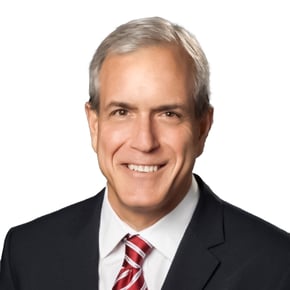"If you read your company's HR strategy, would you be able to tell which company it was written for? Does it demonstrate a deep understanding of how talent can be deployed to drive real competitive advantage for your company? Are you focused on the war for talent or on winning the war with talent?"
Reading these questions posed by Prudential Financial's Chief HR Officer Lucien Aliziari over a decade ago1 reminds me that the quintessential purpose of the HR function is to connect people to the business. That calls for differentiation—not sameness.
Strategy is, as UCLA professor Richard Rummelt said, both "an educated prediction of how the world works" and "the application of strength against weakness…or, if you prefer, to the most promising opportunities."2 A company's people strategy should, therefore, reflect its context and focus its resources appropriately.
In the 1950s, for instance, we in HR focused on laying the basic infrastructure for our post-WWII workforce. Then, it made sense for companies across all sectors to offer returning veterans job security, automatic cost-of-living raises, defined benefit pension plans, and retiree health insurance. That gave them, their families, our workforces, and society some much-needed stability.
By the 1990s, business had shifted from domestic to global, resulting in a different set of requirements from a talent standpoint. The war for talent was on, and we shifted focus to recruitment and retention. Today, with geopolitical conflicts and shortages souring the global economy and technology and pandemics disrupting the workplace, our focus is shifting again.
Now we must directly link the demand for talent to the supply and develop differentiated people strategies to "win with talent."
Differentiated Talent Strategy
A strategy is neither a guarantee of what will happen nor of performance. A talent strategy is merely an argument you make as to who you will put into play in which roles in the business for the company to win. A differentiated talent strategy goes one step further. It anticipates and plans the movement of individuals in the organization to align with the different capabilities required, over time, to execute the business strategy. It makes disproportionate investments in talent where disproportionate returns in value are expected. In this way, it essentially links talent to value on an ongoing basis, which implies we must directly link talent to value creation.
The concept of differentiation is straightforward; its application is not so much so. As Kevin Cox, EVP of Human Resources at the American Express Company at the time, put it, while differentiation avoids "the tendency of leaders to manage everyone to the middle," it inevitably produces tension. The use of the 9-box and the widespread practice of labeling "high potentials" and "very high potentials" elicits concerns about systemic bias and discrimination.3 If, as Cox suggests, "any forcing device to differentiate talent will do," then I suggest we use one that is fair and evidence-based, one without any hint of politics, one that focuses everyone on the demand side of the talent equation.
The 3 Key Differentiators
In today's demand-driven world, differentiation is critical to the success of a talent strategy. A differentiated talent strategy focuses on three key components:
1. VALUE • When I was CHRO at Macy's, we identified and developed talent strategies for three roles critical to value delivery: data scientists, customer-facing technologists, and fulfillment experts. We were right to do so. These three roles delivered the competitive advantage we were looking for as the retail business moved online. (For more details on this strategy, see my article "Success doesn't guarantee survival.").
2. OPPORTUNITY • During my 12 years at PepsiCo, I was allowed to prove myself, learn, and grow in eight different roles. There may be no greater differentiator than who you choose to move quickly through the organization, provided they are "in role" long enough to live with their mistakes. The retentive value of this focus is immense and cannot be replicated.
3. REWARDS • Rewards can take many forms; however, the most effective are those that highlight the answers to two questions. First, what is most important to the success of the business? Second, how is your contribution to the success of the business seen in the eyes of the organization? An intense focus on what is most important and who is over-indexing on those critical few deliverables creates meaningful differentiation and visible impact.
If this has you wondering how differentiated your current talent strategy is, you can go back to Aliziari's questions to run a quick check.
First, is it obvious to anyone that the strategy is for your company? The roles you've identified as critical to value should align with your unique business strategy. Second, do your deployments create a competitive advantage for your company? The people you deploy to your critical roles should be relating to their assignments as interesting, worthwhile opportunities. And third, are these individuals ready, willing, and able to go into battle for your company? If so, the rewards you offer should not be driven by the market: they should reflect the market and their unique contribution to value creation.
Checking off all three of these differentiating items—critical roles linked to business strategy, deployments to opportunities, and rewards to value contributions—will go a long way toward winning with talent.
NOTES
1 Brian E Becker, Mark A Huselid, and Richard W Beatty. The Differentiated Workforce: Transforming Talent into Strategic Impact (Harvard Business Press: Boston, MA, 2009). Quote is extracted from a testimonial found at the front of the book.
2 Richard Rumelt, Good Strategy/Bad Strategy: The Difference and Why It Matters (Random House: New York, NY, 2011).
3 Editors, Patrick Wright, John Boudreau, David Pace, Libby Sartain, Paul McKinnon, and Richard Antoine. The Chief HR Officer: Defining the New Role of Human Resource Leaders. (San Francisco, CA: Jossey-Bass, 2011), pp. 75-76.

